When exploring the world of compact cars, two models that consistently draw attention are the Hyundai i10 and the MG MG3. Both hatchbacks aim to provide an engaging driving experience while catering to the needs of modern-day urban dwellers. In this article, we will compare the two vehicles in terms of technical specifications, innovations, and overall performance.
Hyundai i10 vs MG MG3 – Performance, range & efficiency compared
Compare performance, boot capacity, efficiency and price at a glance.
Find out which car is the better choice for you – Hyundai i10 or MG MG3?
Design and Dimensions
The Hyundai i10 presents a compact and agile design, coming in at 3,670 mm in length and 1,680 mm in width. Its sporty stance and modern aesthetics make it appealing to a younger audience. On the other hand, the MG MG3 stretches the dimensions with a length of 4,113 mm and width of 1,797 mm, offering a more robust appearance. Both cars come with five doors and space for up to five passengers, but the MG3 provides slightly more trunk capacity at 293 liters compared to the i10's 252 liters.
Powertrains and Performance
The Hyundai i10 boasts a versatile range of engine options, including 1.0L and 1.2L petrol engines with power outputs ranging from 63 HP to 90 HP. Equipped with either a manual or automated manual transmission, the i10 delivers commendable fuel efficiency with consumption figures resting between 4.9L to 5.4L/100km. The acceleration from 0-100 km/h varies across models, the quickest achieving this in 11.4 seconds, while the top speed reaches up to 175 km/h.
In contrast, the MG MG3 is powered by a 1.5L full hybrid engine that produces a significant 194 HP, combined with an automatic gearbox for smooth gear transitions. This model excels in performance, achieving the 0-100 km/h sprint in merely 8 seconds, with a maximum speed of 170 km/h. Moreover, the MG3 showcases impressive fuel consumption at just 4.4L/100km, positioning it as an eco-friendly option without compromising power.
Driving Dynamics
Both vehicles feature front-wheel drive configurations that offer excellent traction and control, especially in urban environments. The i10's lightweight design, with a curb weight ranging from 996 kg to 1,010 kg, contributes to its nimbleness on the road. Meanwhile, the MG3 weighs in at 1,285 kg, giving it a solid feel, albeit slightly heavier. The driving experience in both models is tailored for maximum comfort and maneuverability, capturing the essence of everyday city driving.
Technological Innovations
Modern automobiles are as much about technology as they are about engineering. The Hyundai i10 comes equipped with a variety of advanced features, including an infotainment system compatible with Apple CarPlay and Android Auto, enhancing connectivity for users. Safety features include driving assist tools that improve overall driving confidence.
The MG MG3, on the other hand, pushes the envelope with its hybrid technology, showcasing innovative engineering aimed at sustainability. Its commitment to reducing emissions is evident, with a CO2 output of just 100 g/km. The car also includes a contemporary infotainment system, coupled with comprehensive safety features that make it suitable for families and tech-savvy drivers alike.
Conclusion: Which One Reigns Supreme?
While both the Hyundai i10 and MG MG3 have unique strengths, the choice ultimately depends on individual preferences and requirements. The i10 is a perfect fit for those seeking a compact, fuel-efficient hatchback with solid performance for city driving. Conversely, the MG3 excels for those who prioritize power and eco-friendliness without sacrificing space and comfort.
In the end, whether you gravitate towards the agile Hyundai i10 or the robust MG MG3, both models demonstrate that compact cars can deliver versatility, efficiency, and enjoyable driving experiences in today’s automotive landscape.
Here’s where it gets real: The technical differences in detail
Costs and Efficiency:
Looking at overall running costs, both models reveal some interesting differences in everyday economy.
Hyundai i10 has a barely noticeable advantage in terms of price – it starts at 14600 £, while the MG MG3 costs 15400 £. That’s a price difference of around 858 £.
Fuel consumption also shows a difference: MG MG3 manages with 4.40 L and is therefore to a small extent more efficient than the Hyundai i10 with 4.90 L. The difference is about 0.50 L per 100 km.
Engine and Performance:
Under the bonnet, it becomes clear which model is tuned for sportiness and which one takes the lead when you hit the accelerator.
When it comes to engine power, the MG MG3 has a clearly edge – offering 194 HP compared to 90 HP. That’s roughly 104 HP more horsepower.
In acceleration from 0 to 100 km/h, the MG MG3 is decisively quicker – completing the sprint in 8 s, while the Hyundai i10 takes 11.40 s. That’s about 3.40 s faster.
In terms of top speed, the MG MG3 performs minimal better – reaching 185 km/h, while the Hyundai i10 tops out at 175 km/h. The difference is around 10 km/h.
There’s also a difference in torque: Hyundai i10 pulls slightly stronger with 172 Nm compared to 148 Nm. That’s about 24 Nm difference.
Space and Everyday Use:
Whether family car or daily driver – which one offers more room, flexibility and comfort?
Both vehicles offer seating for 5 people.
In curb weight, Hyundai i10 is noticeable lighter – 996 kg compared to 1237 kg. The difference is around 241 kg.
In terms of boot space, the MG MG3 offers a bit more room – 293 L compared to 252 L. That’s a difference of about 41 L.
In maximum load capacity, the Hyundai i10 performs barely noticeable better – up to 1050 L, which is about 67 L more than the MG MG3.
When it comes to payload, MG MG3 barely noticeable takes the win – 448 kg compared to 423 kg. That’s a difference of about 25 kg.
Who wins the race?
The MG MG3 proves to be is largely superior and therefore becomes our DriveDuel Champion!
MG MG3 is the better all-rounder in this comparison.
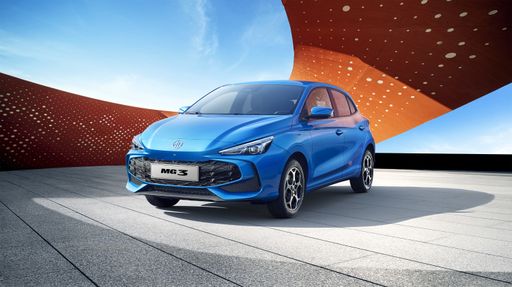 @ MG Motor / SAIC Motor Corporation
@ MG Motor / SAIC Motor Corporation
MG MG3
Hyundai i10
The Hyundai i10 impresses with its compact design, making it an ideal choice for navigating through busy urban environments. Its interior is surprisingly spacious, offering drivers and passengers comfort beyond what one might expect from a city car. The model combines efficiency and practicality, making it an attractive option for those seeking both economy and functionality in their daily commute.
details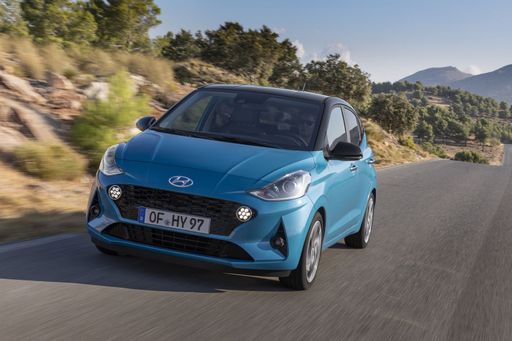 @ Hyundai Motor Company
@ Hyundai Motor Company
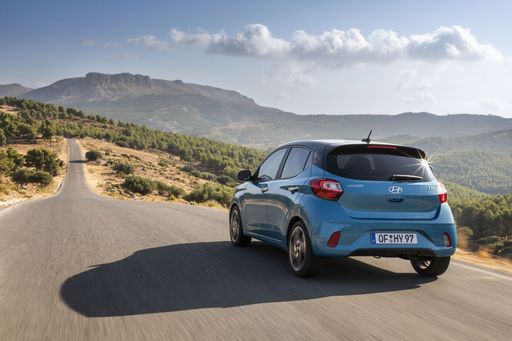 @ Hyundai Motor Company
@ Hyundai Motor Company
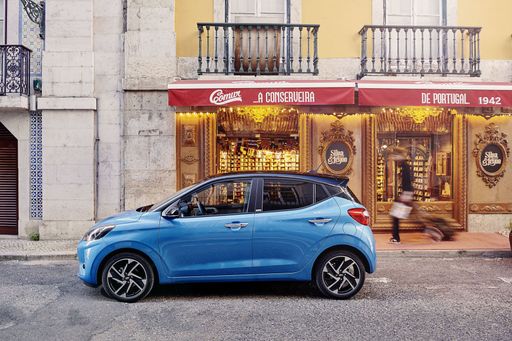 @ Hyundai Motor Company
@ Hyundai Motor Company
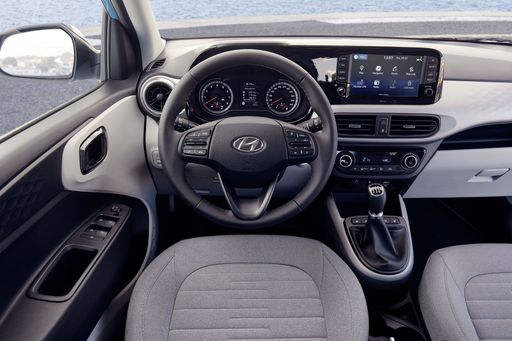 @ Hyundai Motor Company
@ Hyundai Motor Company
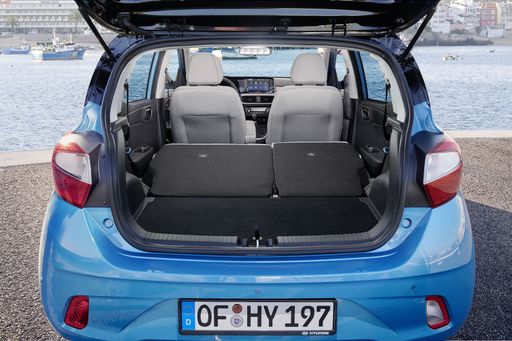 @ Hyundai Motor Company
@ Hyundai Motor Company
MG MG3
The MG MG3 presents itself as a vibrant and compact hatchback that's well-suited for urban environments. Its design combines a youthful aesthetic with practicality, offering a comfortable interior and a user-friendly infotainment system. With its engaging driving dynamics, it provides an enjoyable city ride that belies its budget-friendly pricing.
details @ MG Motor / SAIC Motor Corporation
@ MG Motor / SAIC Motor Corporation
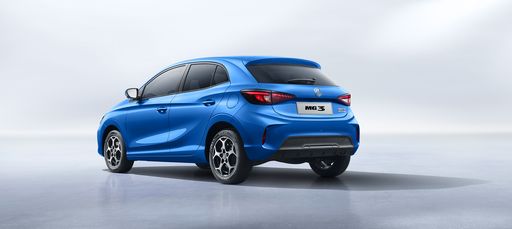 @ MG Motor / SAIC Motor Corporation
@ MG Motor / SAIC Motor Corporation
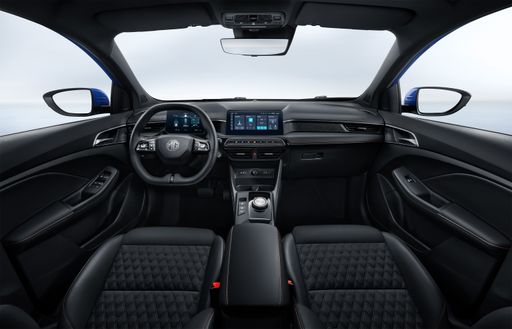 @ MG Motor / SAIC Motor Corporation
@ MG Motor / SAIC Motor Corporation
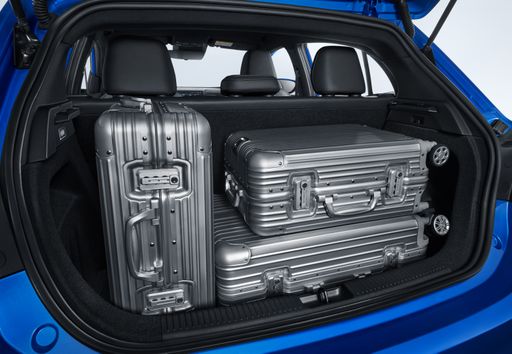 @ MG Motor / SAIC Motor Corporation
@ MG Motor / SAIC Motor Corporation
 @ Hyundai Motor Company
@ Hyundai Motor Company
|
 @ MG Motor / SAIC Motor Corporation
@ MG Motor / SAIC Motor Corporation
|
|
|
|
Costs and Consumption |
|
|---|---|
|
Price
14600 - 19000 £
|
Price
15400 - 21400 £
|
|
Consumption L/100km
4.9 - 5.5 L
|
Consumption L/100km
4.4 - 6.1 L
|
|
Consumption kWh/100km
-
|
Consumption kWh/100km
-
|
|
Electric Range
-
|
Electric Range
-
|
|
Battery Capacity
-
|
Battery Capacity
-
|
|
co2
110 - 124 g/km
|
co2
100 - 137 g/km
|
|
Fuel tank capacity
36 L
|
Fuel tank capacity
36 - 45 L
|
Dimensions and Body |
|
|---|---|
|
Body Type
Hatchback
|
Body Type
Hatchback
|
|
Seats
4 - 5
|
Seats
5
|
|
Doors
5
|
Doors
5
|
|
Curb weight
996 - 1099 kg
|
Curb weight
1237 - 1285 kg
|
|
Trunk capacity
252 L
|
Trunk capacity
293 L
|
|
Length
3670 - 3675 mm
|
Length
4113 mm
|
|
Width
1680 mm
|
Width
1797 mm
|
|
Height
1480 - 1483 mm
|
Height
1502 mm
|
|
Max trunk capacity
1050 L
|
Max trunk capacity
983 L
|
|
Payload
344 - 423 kg
|
Payload
373 - 448 kg
|
Engine and Performance |
|
|---|---|
|
Engine Type
Petrol
|
Engine Type
Full Hybrid, Petrol
|
|
Transmission
Manuel, Automatic
|
Transmission
Automatic, Manuel
|
|
Transmission Detail
Manual Gearbox, Automated Manual
|
Transmission Detail
Automatic Gearbox, Manual Gearbox
|
|
Drive Type
Front-Wheel Drive
|
Drive Type
Front-Wheel Drive
|
|
Power HP
63 - 90 HP
|
Power HP
116 - 194 HP
|
|
Acceleration 0-100km/h
11.4 - 18.4 s
|
Acceleration 0-100km/h
8 - 10.8 s
|
|
Max Speed
143 - 175 km/h
|
Max Speed
170 - 185 km/h
|
|
Torque
93 - 172 Nm
|
Torque
148 Nm
|
|
Number of Cylinders
3 - 4
|
Number of Cylinders
4
|
|
Power kW
46 - 66 kW
|
Power kW
85 - 143 kW
|
|
Engine capacity
998 - 1197 cm3
|
Engine capacity
1490 - 1495 cm3
|
General |
|
|---|---|
|
Model Year
2024
|
Model Year
2024 - 2025
|
|
CO2 Efficiency Class
C, D
|
CO2 Efficiency Class
C, E
|
|
Brand
Hyundai
|
Brand
MG
|
Is the Hyundai i10 offered with different drivetrains?
The Hyundai i10 is offered with Front-Wheel Drive.
The prices and data displayed are estimates based on German list prices and may vary by country. This information is not legally binding.
